


Your body will show signs of stress when your life becomes too fast-paced, too loud, or overwhelming. Your body shows stress through tight shoulders, short breathing, and a heavy chest. Stress creates mental challenges that produce physical symptoms in our bodies.
The best yoga practices can help you relieve stress and tension. Yoga focuses on smooth movements, deep breathing, and brief pauses instead of attempting challenging backflips. This is what yoga feels like; it’s more of an attempt to kindly remind you to slow down instead of treating it like a competition.
Let’s review how you can use yoga to feel a little relaxed,d – even if the time you have is 5 minutes or 50.
Table of Contents
ToggleDon’t let Instagram stories about yoga influence you. It is not all about fancy clothing or perfect poses.
Yoga is more of a blend between the three activities: breathing, movement, and stillness. These elements enable you to feel and connect with your body, which is also mental.
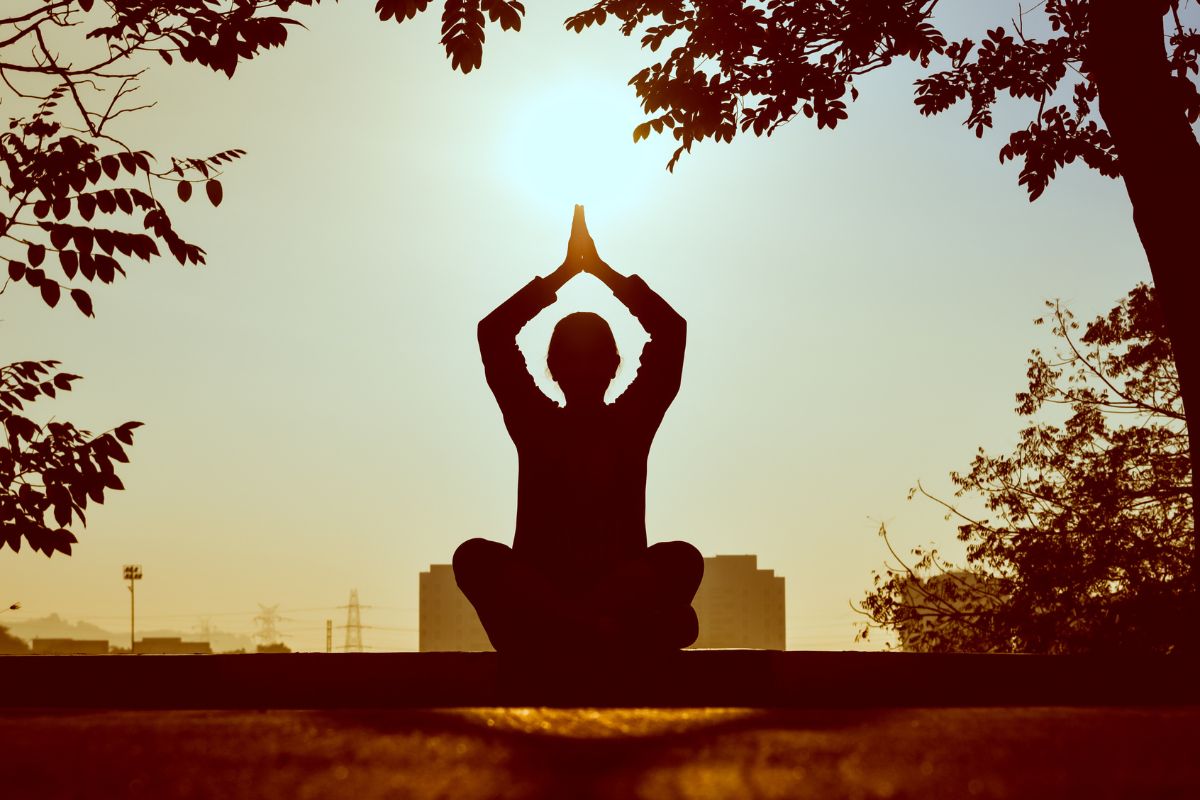
There are different types of yoga. For stress, only gentle kinds of yoga are helpful. Focussing on slow stretches and deep breathing, along with still moments to relieve stress and calm the mind, usually works well.
Also read: Sleep Better Every Night with These Simple Habits
When you are stressed, this is what happens to your body: it prepares to protect itself. It increases your heart rate, shortens your breath, and tenses your muscles. That’s your “fight or flight” system activating.
Yoga does the contrary. It enables you to enter your body’s “rest and recuperate” mode. By slowly breathing, gently stretching, and paying attention to the current moment, your brain calms down and slowly lets you unwind. Over time, it becomes easier to handle everyday stress.
This is where most people get stuck before they start: “I don’t have the right equipment.” “I am not flexible.” “I don’t have time.” Here’s the truth: You don’t need any of that. You can do yoga on your living room floor, in your pajamas. You can do it sitting in a chair. Even standing in your kitchen while waiting for your tea to boil.
The best kind of yoga for stress is the kind you’ll do.
You don’t need a full hour. You don’t need candles. You just need a little bit of quiet. Here’s a super simple 5-minute stress-relief routine:

That’s it. It might not seem like much, but even this short pause can give your nervous system a break.
Now, let’s walk through some simple yoga poses that do not require a lot of space. But they are very beneficial for calming your body and mind.
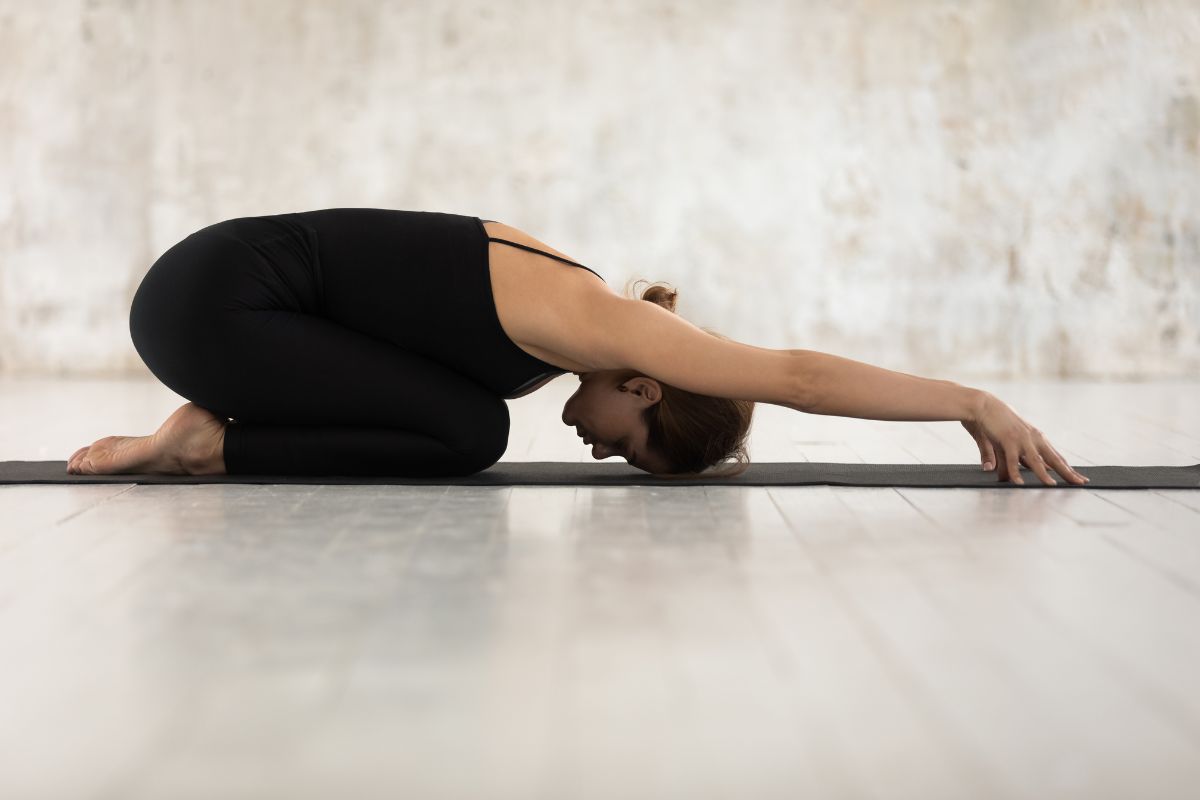
Start from a kneeling position and lower your body to the floor with your chest as you sit back on your heels. Rest your head on a pillow or the ground and stretch your arms forward. Don’t forget to breathe! You can stay in this position for thirty seconds to two minutes. It’s a simple pose, but it feels like a hug for your nervous system.

Lie on your back with your legs resting straight up on a wall or headboard. Arms can rest at your sides. Close your eyes. Breathe slowly. Stay for 5 to 10 minutes. This pose helps calm your heart rate and eases tired legs.
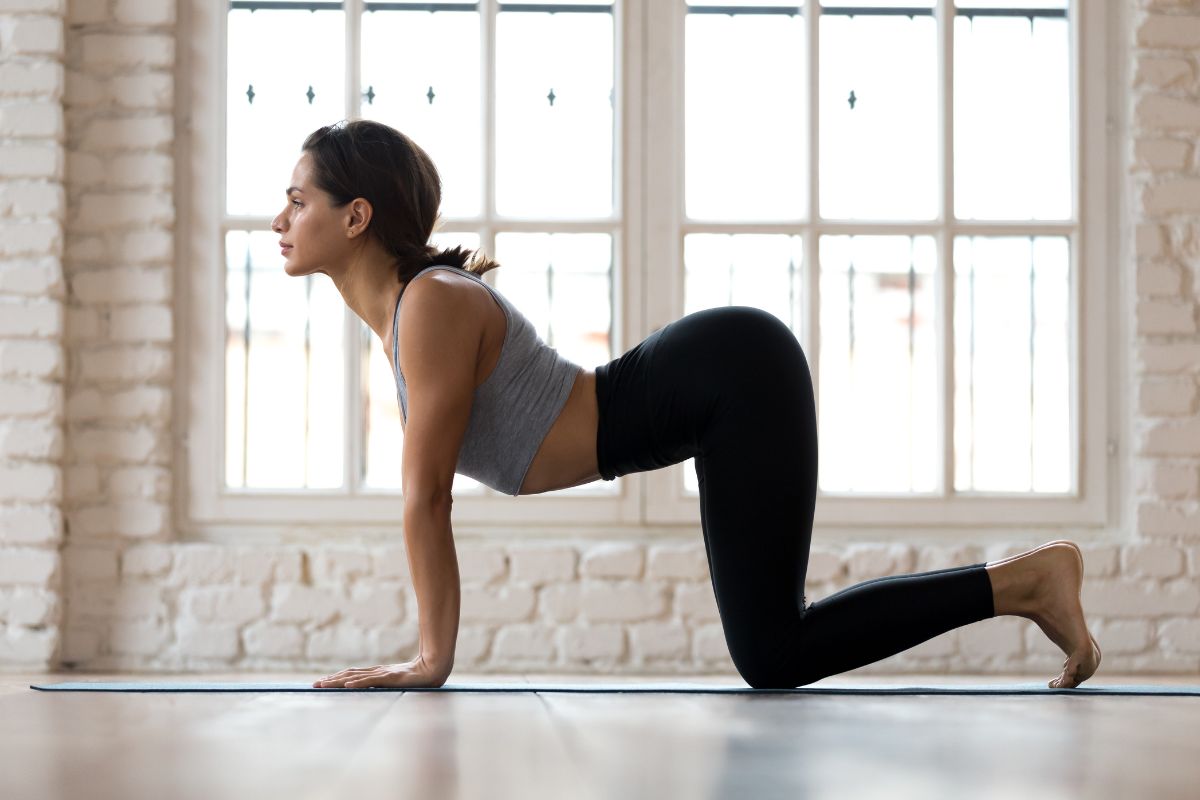
Get on your hands and knees. As you breathe in, arch your back and look up (Cow). As you breathe out, round your back and tuck your chin (Cat). Move slowly with your breath for 1–2 minutes. It’s great for loosening up your back and syncing your breath with movement.
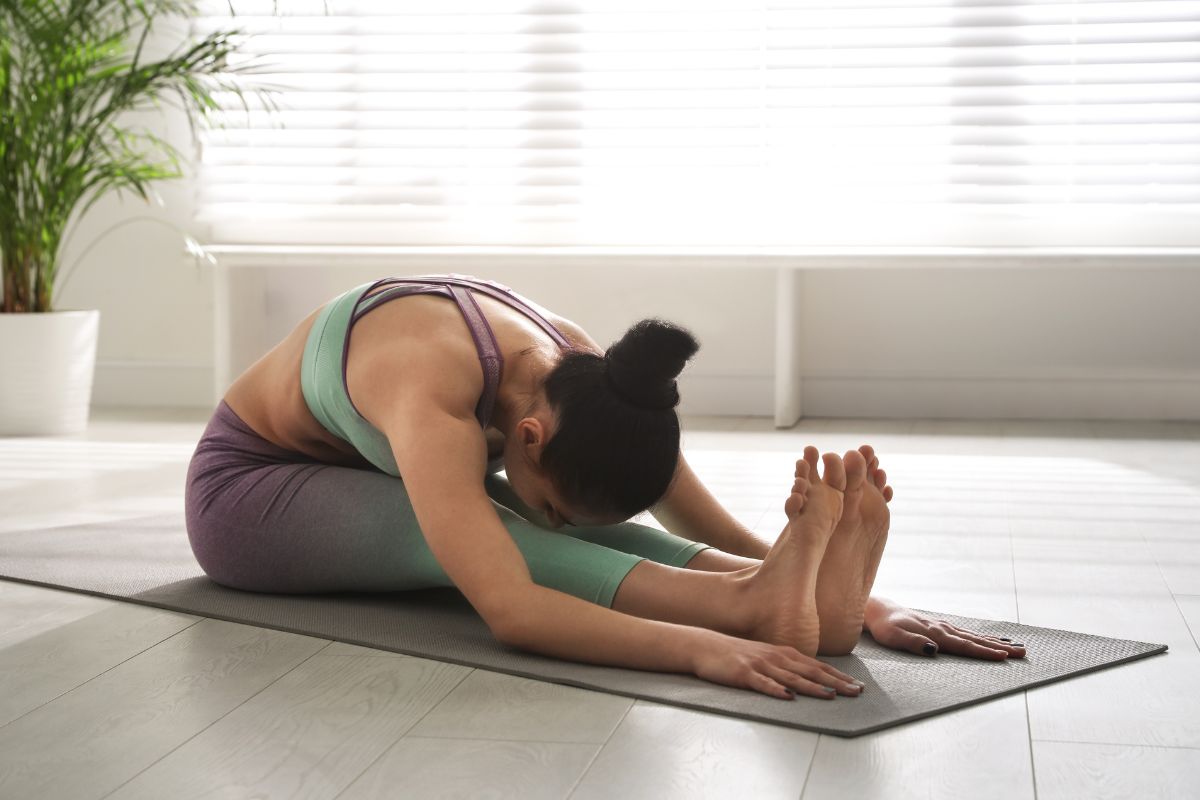
Sit with your legs out straight. Inhale and raise your arms. As you exhale, gently reach toward your toes. You don’t have to touch them—just let your body fold forward. This one calms the brain and stretches your spine.
Riya, a school teacher, shared that she often came home feeling exhausted and anxious. Her shoulders ached, and her mind was racing. She started with just one pose—Child’s Pose—for five minutes before bed. After a week, she added Legs Up the Wall.
Now, she has a 15-minute evening routine. She says she sleeps better and doesn’t snap at her family like she used to. “It’s not a magic fix,” she says. “But it helps. A lot.”
Yoga for stress relief isn’t supposed to feel like a workout. If something hurts, stop. If a pose feels strange, adjust it. You can use a pillow, a rolled-up towel, or just skip the pose altogether. This isn’t about pushing. It’s about softening.
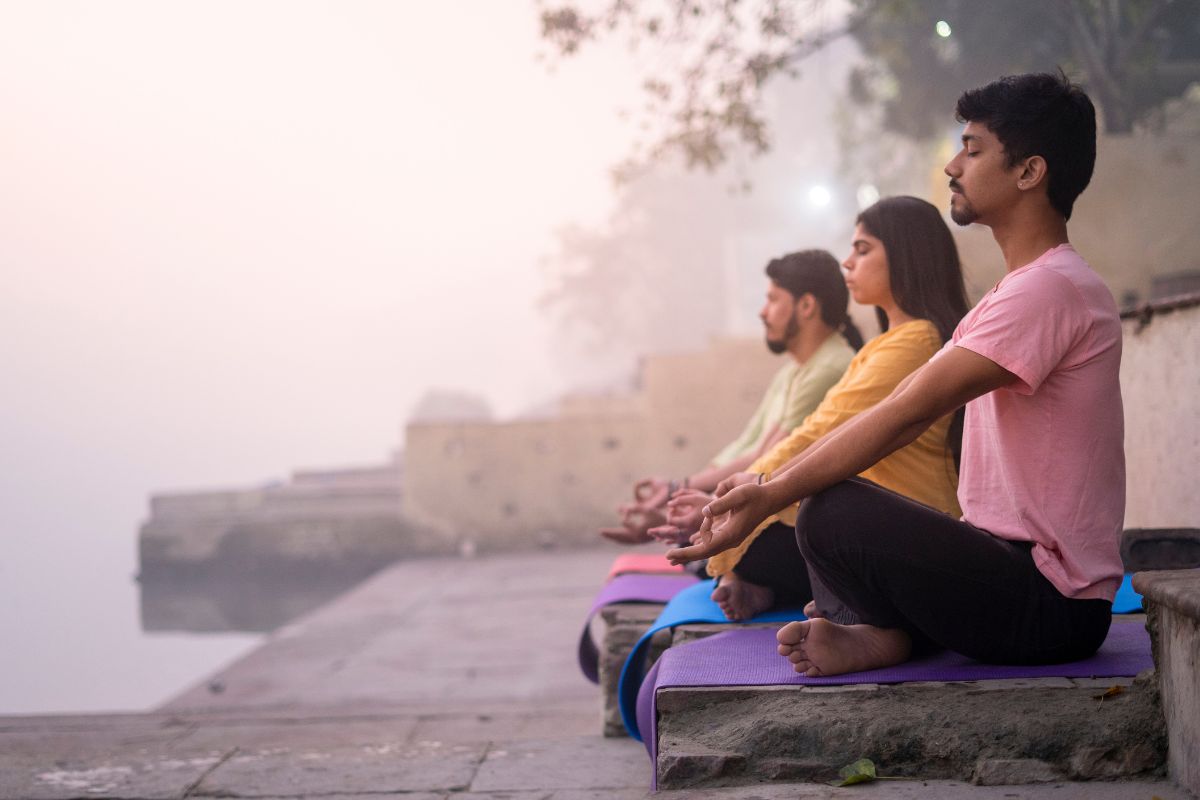
Breathing deeply is one of the fastest ways to calm yourself. And yoga gives you the space to practice that. Here’s a simple one:
Box Breathing
It’s like hitting a reset button in your brain.
Some people like soft music. Some like silence. Some want candles, and others do it under harsh office lights during lunch. There’s no wrong way.
If it does, keep doing it. If not, tweak it.
Every day,y if you can—but don’t stress about it (see what we did there?). Even doing it 3 times a week can make a difference. The key is being consistent. You’re training your body and brain to slow down on purpose.
Also read: Deepika Padukone’s Bold Red Look That Got Everyone Talking
Stress isn’t something we can completely avoid. But we can learn how to handle it better. Yoga gives you tools—your breath, your body, your awareness—that are always with you. You don’t need a yoga teacher.
You don’t need fancy clothes. You just need a quiet minute, a few easy moves, and a little space.
Start small. Start today.

